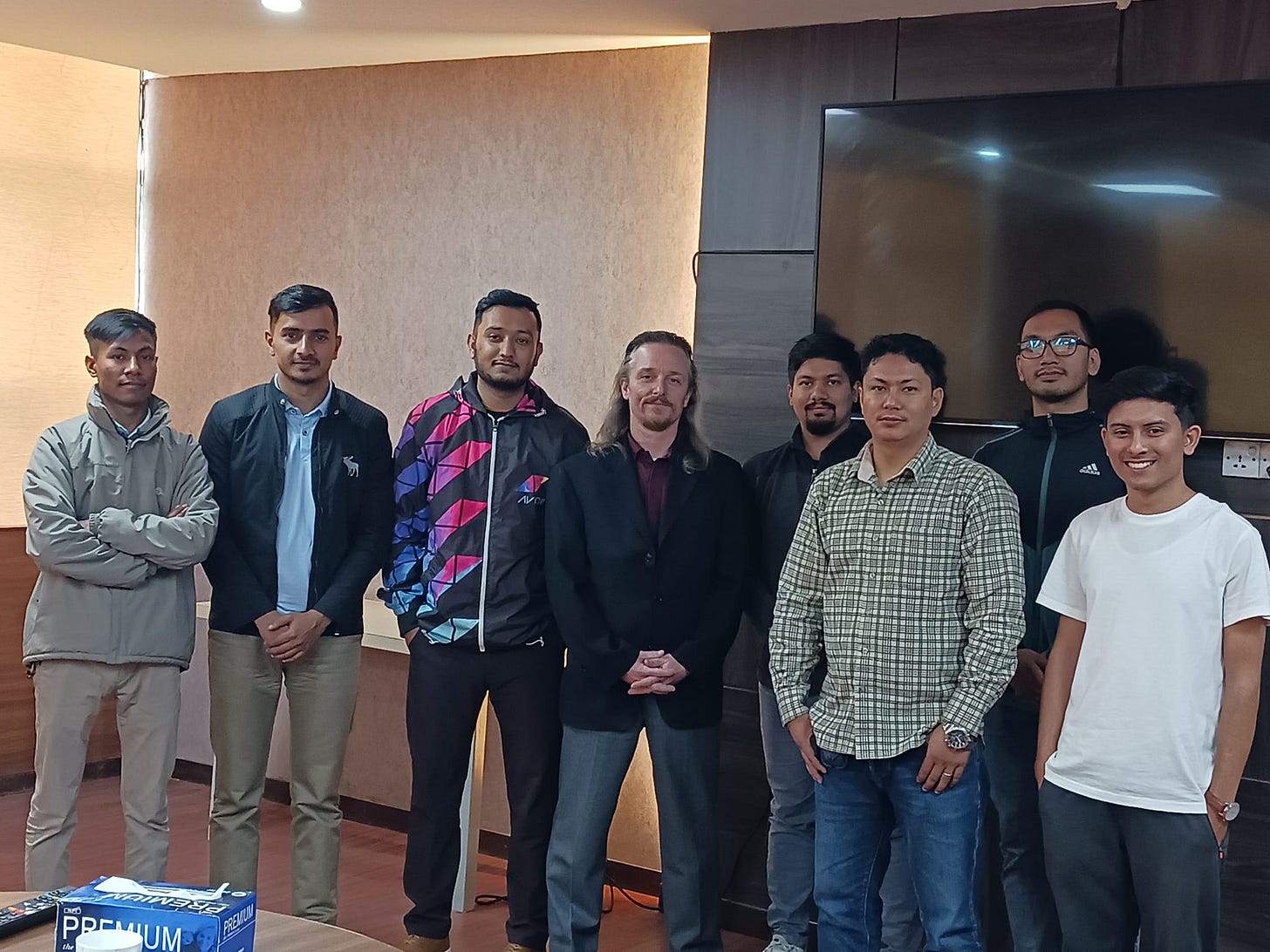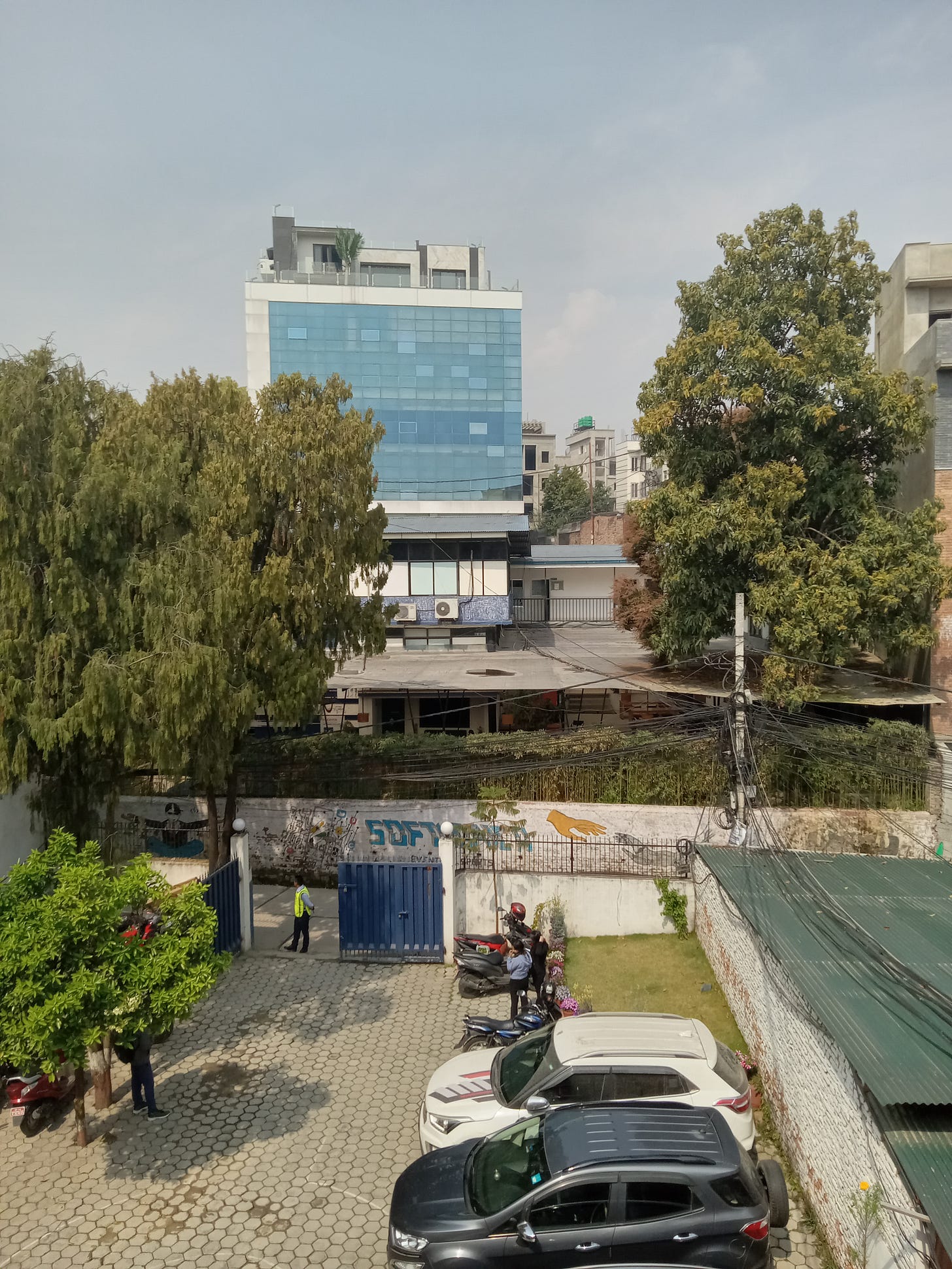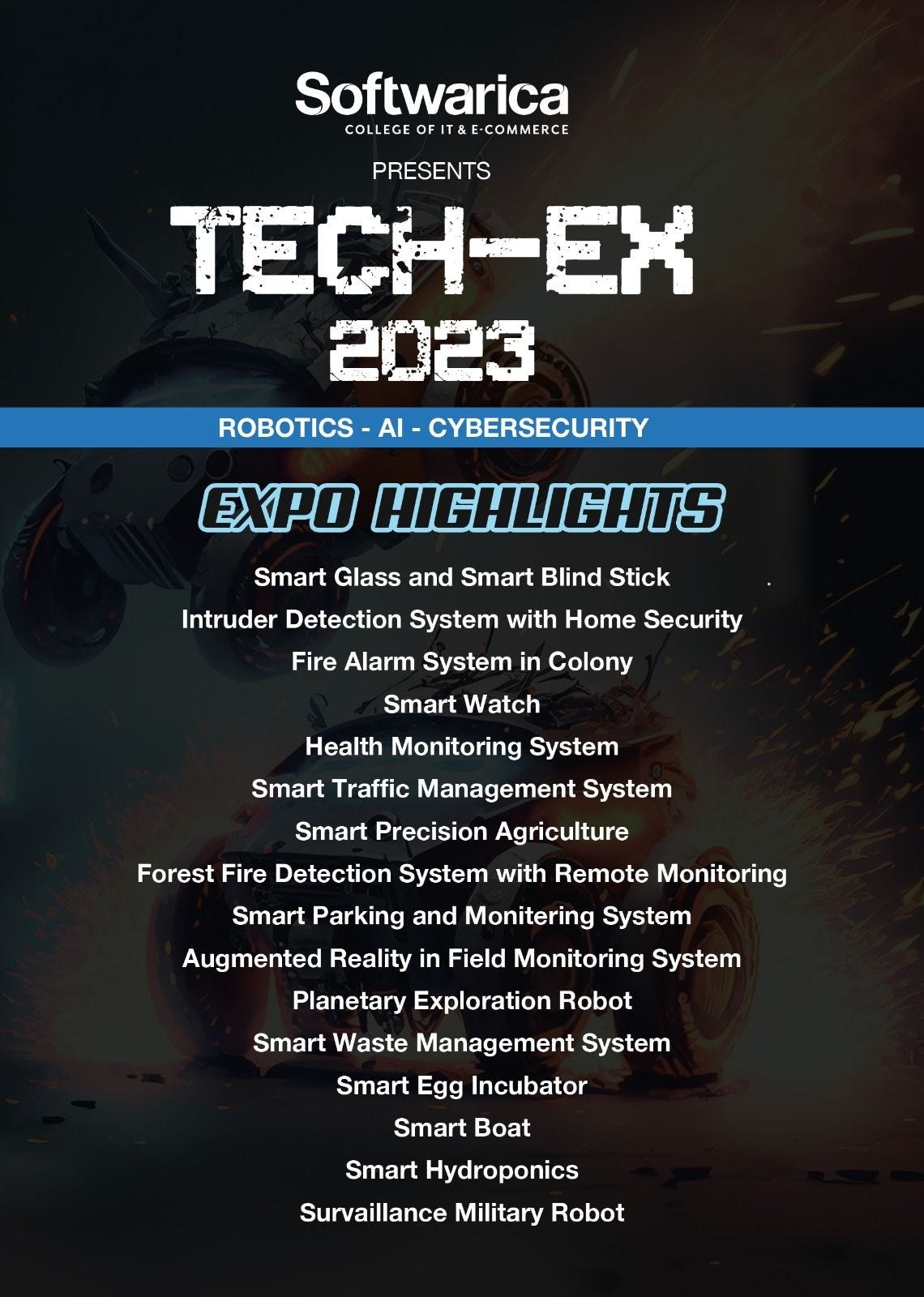Let me begin this article with a personal announcement. Softwarica College of IT and E-Commerce, located in Kathmandu, Nepal, has recently named me Senior Lecturer and Consultant of Cybersecurity, Ethical Hacking, and Digital Forensics. I am honored to join this prodigious institute and am looking forward to offering my knowledge and experience to the next generation of technology innovators and entrepreneurs in Nepal.
Senior Lecturer Robert Vanwey with some of the Softwarica instructors’ team
Softwarica College is situated in the heart of Kathmandu, Nepal. Hosting around 950 students, the college focuses on Computing, Cybersecurity, and Ethical Hacking. Considered one of the premier colleges in these fields in Nepal, Softwarica partners with Coventry University in the United Kingdom. Coventry University routinely receives among the highest ratings worldwide, tracing its roots back to the year 1843. Students who graduate from Softwarica receive a Coventry University degree, and many go on to illustrious careers both in and out of Nepal.
Softwarica College campus
Unlike many other schools in Nepal, Softwarica takes a practical-centered approach. Students spend only as much time on theory and principles as needed, before getting their hands on real-world problems. This is done through well-funded and maintained computer labs, stocked with the most advanced equipment available. Instructors come from a variety of backgrounds, bringing real-world experience earned in numerous countries and fields across the globe, including the USA, UK, Australia and more. In addition to classroom and lab modules, Softwarica offers workshops and contests that put students’ skills to the test. These include Capture the Flag, Hack the Box, Solving Crimes with Digital Forensics, and other programs. Students receive certificates in some cases and prizes in others.
Softwarica’s annual Tech Expo enshrines the culmination of all this learning into an event in which students get to ‘show their work.’ Partly serving as an introduction to the college’s facilities, Tech-Ex—as it is called—contains numerous displays of student ingenuity throughout the various corners of the multi-building campus. Visiting potential students, their families, and esteemed guests have the opportunity to see all of the qualities the college has to offer, meet the faculty who provide experiential instruction, and see firsthand the types of innovations students themselves will one day be capable of crafting.
This year’s projects may exceed even the wonders of years’ past. Perhaps the preeminent feature is the ‘Smart City.’ Built by several students of varying specialties, the city is a model of what Kathmandu (and many other places) could become if innovation leads the way in developing future infrastructure. Comprising synchronized traffic lights, eco-friendly buildings, computerized organization of municipal functions, and an emergency alert system for disasters, the model illustrates highly-focused, forward thinking on improving the urban landscape. Many of the city’s functions are coordinated and controlled by a central server to facilitate the highest level of efficiency. With an eye toward sustainability, the students even designed and built the entire electrical grid for the city and its computerized hub, generating all of the power from solar cells.
Testing a handmade solar panel
As part of the Smart City presentation, Softwarica also introduces the Emergency ALert System (EALS) mobile application. Designed in coordination with the EALS Global Foundation, the application employs a variety of data sources to create emergency notifications and alerts for pending natural disasters in Nepal. It uses data supplied by satellites, crowdsourcing, weather stations, and trusted partners on the ground. A server ingests this data and determines the areas that face potential calamities from the detected disaster and can manually or automatically issue alerts to people living in those locales. The application provides notified users a map of the incident, and will eventually include more detailed information such as evacuation routes, safe houses, supply depots, and more. One student has designed and built the hardware and software to issue these alerts even to devices that do not have network coverage like WiFi or cellular. Softwarica’s Smart City provides a visual representation of how this system works.
EALS mobile application screenshot
Another item on display is Softwarica’s digital forensics program. This exhibition station will include a video of how digital forensics helps to solve crimes. Visitors can see some of the hardware involved, and will also get a peek at what an actual forensic acquisition looks like in the hands of a forensic examiner. Technical analysts use data acquired from cellphones, computers, CCTV and other sources to help solve crimes by identifying suspects, tracking their whereabouts, and discovering contextual information. One famous case in which digital forensics helped solve a crime was that of the American serial killer known as BTK (real name, Dennis Rader). Law enforcement examiners discovered metadata on a floppy disk that Rader himself sent to police. From that metadata, investigators learned his place of work and from CCTV footage they located his vehicle. Shortly thereafter, they arrested Rader who later received multiple life prison sentences for killing 10 people.
Solving Crimes is becoming a very Hi-Tech Field
Computer technology appears in crimes all the time. In virtually every criminal act, some piece of electronic evidence exists somewhere, whether from mobile devices, CCTV, internet traffic, cellular data, security systems or otherwise. Data from these sources help reveal many things about a criminal, victim, or the crime itself. This can include their l…
Another project has five students creating a Smart Farm. For this exhibit, students built a mockup of three farm fields. Each section is inlaid with numerous sensors that detect moisture, humidity, and temperature. When the soil conditions exceed healthy parameters, their system automatically triggers response mechanisms, such as irrigation units, to prevent more extensive damage to the soil or plants. Additionally, each field contains scarecrows. These scarecrows not only serve the traditional purpose of frightening away birds with their haunting appearances, but these ones are intelligent—they contain sensors that can detect intruders that may cause damage to crops. Upon such detection, the scarecrows can issue a warning to more effectively frighten off the interlopers.
Softwarica’s Cybersecurity Division presents several exhibitions. These include displays titled, "Pineapple Punch: Exploring WiFi Attacks on Devices,” "Mobile RAT Hack: Securing Devices Against Remote Access Trojans," "HackRF Adventures: Car, and Door Locks," "Poison Tap: Safeguarding Against Data Theft and Remote Control Exploits," and many others. Visitors can learn how attackers exploit WiFi, how cybersecurity professionals protect devices against malware, and many other topics related to defending against malicious actors.
Screen shot of code analysis of CCTV data
Tech-Ex 2023 showcases the remarkable things students of Softwarica are doing here in Nepal. The expo includes over 30 innovations designed and built by students. Technology careers span the globe, so students need to prepare to compete on the global level. Studying at Softwarica provides students both from Nepal and abroad the opportunity to receive a world-class education, which will open many doors in the incredibly vast field of technology. Visit the expo where not only will you be awed by these remarkable displays, you will have the chance to meet the faculty and staff—including me!—who work hard everyday to make Softwarica College the preeminent institute of technology education in Nepal.
If you are a current or potential student, or know someone who is interested in technology and are considering become a student, please share this article and invite them to join!
***
I am a Certified Forensic Computer Examiner, Certified Crime Analyst, Certified Fraud Examiner, and Certified Financial Crimes Investigator with a Juris Doctor and a master’s degree in history. I spent 10 years working in the New York State Division of Criminal Justice as Senior Analyst and Investigator. Today, I teach Cybersecurity, Ethical Hacking, and Digital Forensics at Softwarica College of IT and E-Commerce in Nepal. In addition, I offer training on Financial Crime Prevention and Investigation. I was a firefighter before I joined law enforcement and now I currently run a non-profit that uses mobile applications and other technologies to create Early Alert Systems for natural disasters for people living in remote or poor areas.
Find more about me on Instagram, Facebook, Twitter, LinkedIn, or Mastodon. Or visit my EALS Global Foundation’s webpage page here.
Visit the new Evidence Files Facebook and YouTube pages; Like, Follow, Subscribe or Share!
Read about how Nepal can become the world’s next Tech Hub.
Nepal – the World's next Tech Hub?
The question has often been pondered: “Who will become the next Silicon Valley?” Of course, the question more directly is asking, what region of the globe will host the next generation of tech developers and innovators? Many inquire about this issue because of the apparent decline of the major corporations currently resident in that slice of California …










